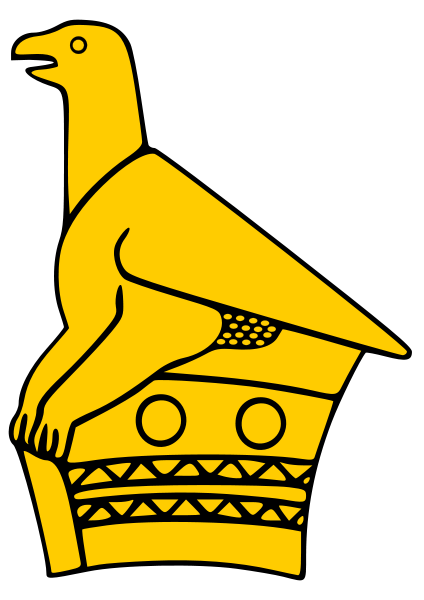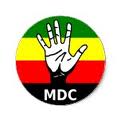Pioneer Days
Bulawayo Behind the Barricades
The laager was a formidable affair as Ransford relates, bristling with guns and surrounded by a frightening array of dynamite-based mines that could be set off with either an electrical charge or being fired upon by marksmen. Some of these improvised charges contained over 130kg of explosive and many were worried that if they were ever used, they would immolate the laager as well as any unfortunate attackers. The signal for everyone to fall back to the laager was initially three rifle shots, later changed to the ringing of the bell at Market Hall. Various points were strengthened and reinforced as the weeks went by; one of the most photographed being the bullet-proof screen of iron piping placed in front of the Sanitary Board's meeting room which doubled as the town's magazine. Henderson relates: “The man who owned the store [where he lived] was called Perkins and he sold gin, whisky, etc. He asked me to make a laager inside the store with the cases of liquor. This I did. Then I found him altering the laager when I got back. He explained that I had placed some of the cases broad-side to the line of fire, so that if a bullet came through it might break half-a-dozen bottles while the end of a bullet would break only one bottle. Whisky was then about 30/- a bottle”.
Accommodation within was miserable. Many people lived in their own wagons and so many arrived that they soon formed a third row inside. Conditions were so bad that even in the earliest days of the war many people lived at their homes, only rushing to safety when they heard the alarm. With an experienced journalist's eye, Sykes (1897: 24-25) vividly describes a typical alarm scene: “Men and women hurrying hither and thither on the general principle of sauve qui peut. Whimpering children dragged and carried. Anxious enquiries as to the cause of the alarm. Some of the more provident were seen to be laden with what articles of property, provisions and valuables they were able to carry. Others caring for nothing so long as their immediate safety was assured. From all points of the compass the startled inhabitants, impelled by the dominant instinct of self-preservation, made for the common shelter in the centre of the town”.
The Sketch dutifully reported on the various attempts to lighten the mood in town as various people took it upon themselves to organise cultural events. Thus we read of various concerts given by Bandmaster Neal in Market Hall, Mr Pingstone's lantern-slide lecture and small theatrical productions. More of a diversion were the ways in which citizens tried to contribute to the defence of the town. The most famous of these was the silk hot-air ballon made by the ever-irrepressible Mr Issels using all the silk petticoats the ladies of the town could provide. With real ingenuity, he made a furnace to provide enough hydrogen to fill the balloon but, as the report tells us, 'the materials obtainable were defective' and it leaked faster than it could be resewn.
After the decisive battle on the Umgusa on April 25, Bulawayo's citizens felt safe once more and many began once again sleeping at home in the suburbs. The ringing of the alarm bell would bring many running for the safety of the wagon-ring, Henderson recalling one notable Jewish storekeeper who arrived panting, with cash box in one hand, a canary cage in the other and loudly demanding help to go and fetch his wife! Sykes (1897: 37) recounts how one man remembered leaving his house unlocked and sent back his wife to make it better secure!
There were ugly scenes too. Bulawayo has a “hanging tree” (Harare does not). On the branches of this tree nine black men were hanged on allegations of looting or spying for the Matabele in the early days of the uprising at a time when many blacks were still in the town employed as servants and general laborers (Davidson 1988: 297, Mullin 2003: 40-41; Ransford 1968: 102; Selous 1896: 136-138; Sykes 1897: 27-28). Selous (1896: 137) notes that three men were incontestably caught, armed and looting 30km from the town, but concedes six others were “tried in a somewhat rough and ready fashion, but were undoubtedly spies and rebels”. Keppel-Jones (1983:462) has argued spies were treated according to military justice and that many more more were shot than ever hanged. Nevertheless, reports on the hangings and a particularly damning photograph (see Schreiner 1897: frontispiece) soon reached the European press drawing considerable condemnation of the authorities of the BSACo. They were probably one of the factors that encouraged Cecil John Rhodes to open negotiations with the Ndebele leadership to end the uprising. We sadly don't know their names or anything else about these men whose unnecessary deaths did so much to halt the war.
There were close encounters as well. In one well-known incident, Bulawayo's citizens were startled awake awake by heavy firing from the direction of the Afrikaner laager. The next morning a number of dead donkeys were found lying dead nearby having being shot by a nervous sentry while they were quietly grazing. Sykes (1897: 37) adds that the citizens were very lucky since behind the bodies of the animals were a number of footprints, showing how the Matabele were cleverly using the approach of the donkeys to disguise their own approach. They retreated when the firing started, imagining themselves discovered.
Sourced from the Zanj Financial Network 'Zfn', Harare, Zimbabwe, email briefing dated 28 March 2011


 South Devon Sound Radio
South Devon Sound Radio Museum of hp Calculators
Museum of hp Calculators Apollo Flight Journal
Apollo Flight Journal Apollo Lunar Surface Journal
Apollo Lunar Surface Journal Cloudy Nights Classic Telescopes
Cloudy Nights Classic Telescopes The Savanna - Saffer Shops in London
The Savanna - Saffer Shops in London Linux Mint
Linux Mint Movement for Democratic Change
Movement for Democratic Change